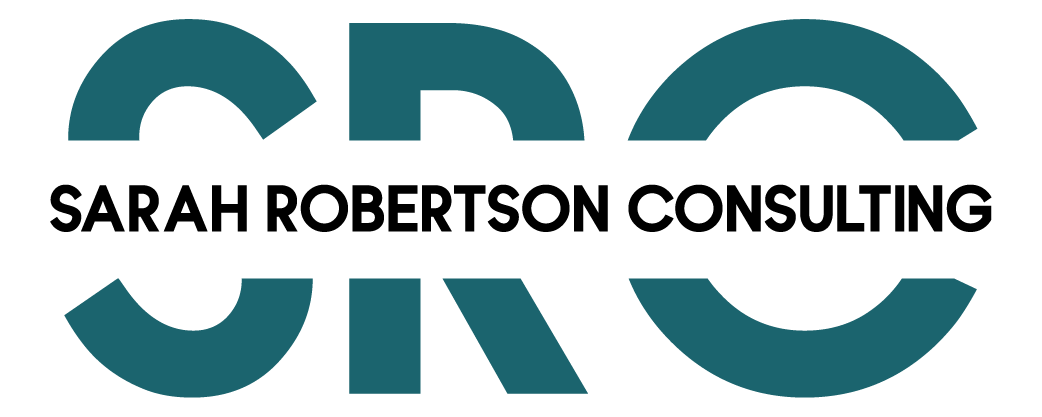Most organisations have some type of onboarding program for new leaders joining the organisation, but what about leaders promoted internally?
The challenges faced by an internally promoted leader are often overlooked, with the assumption that because they know the business they will be fine. However, it’s a critical time in a leader’s career with risks to both the business and the individual if the assimilation of a new leader isn’t done well. There are several key challenges that leaders promoted internally would benefit from being coached, and supported, on in their first 90 days to maximise the chances of a successful and speedy transition. Here are the main ones below, some of them taken from Michael Watkins’s well known 90-day Program.
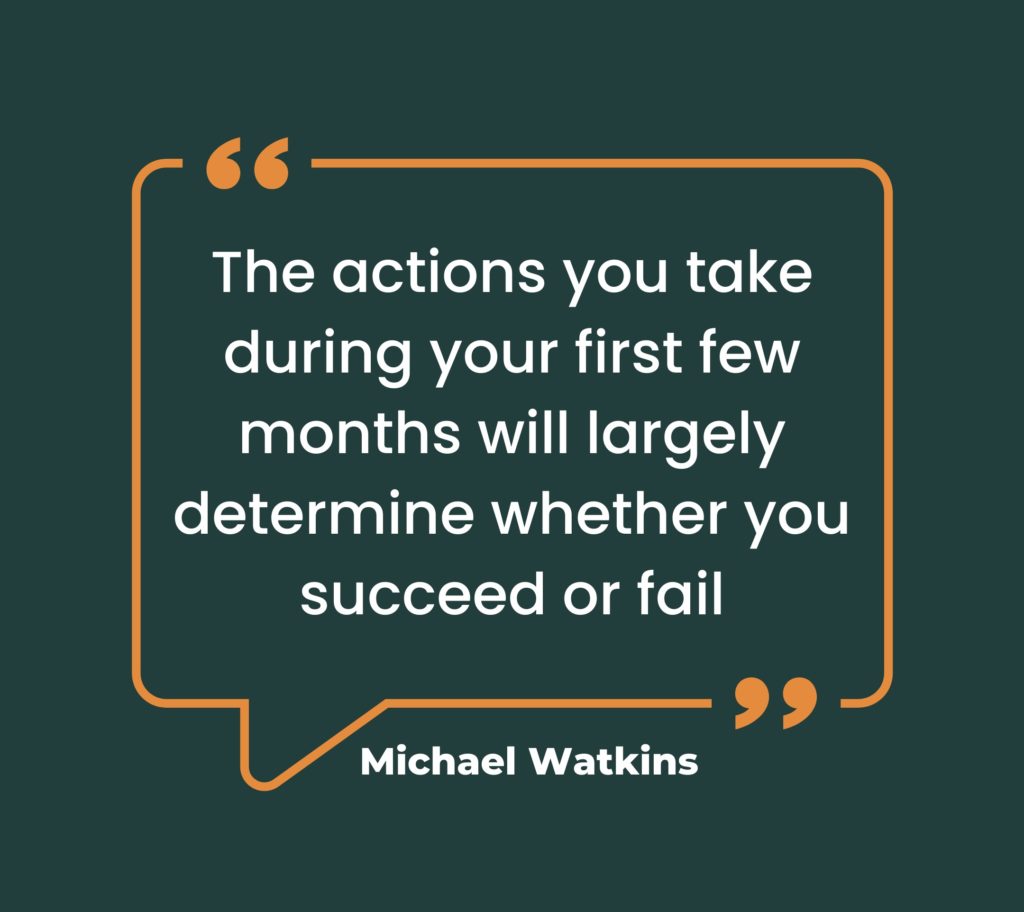
1. Match leadership style to the situation
Supporting the new leader to dial up on a leadership style that matches the requirements, and situation, of the new role. As this is an internal transition, there is likely to be some leadership profiling and assessments previously undertaken that will give their HR lead, or coach, some insight into the leader’s natural style and style under pressure. I cover this, and the potential derailers, in more detail here.
2. Develop relationship with boss
(boss = the leader of the newly promoted leader)
There are 4 key conversations new leaders need to have with their new boss in the first 90 days:
- View from the boss on the current situation
- Clarity & agreement on the expectations, and scope, of the role
- Agreement on resources and what the leader needs to be successful
- How the relationship will work
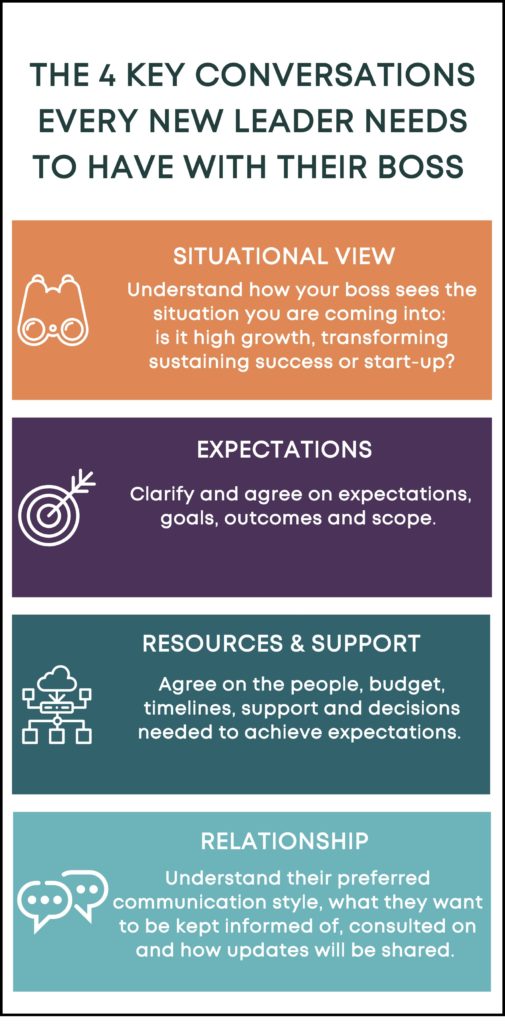
3. Lead people who were previously peers
There is no one answer on how to approach this, it is very dependent on the personalities, the nature of the relationships, the situation and the leadership styles involved. Some coaching on how to manage this will go a long way to making a transition successful, especially when there may be some team members who also applied for the position and some team members who the leader was closer to than others.
4. Establish themselves as team leader
Often a newly promoted leader is going to be leading the team they were previously a member of. It’s important to step into this in a way that builds trust and credibility.
Taking a workshop approach to onboarding a new leader to their team minimises miscommunication and rumour. Even if the new leader has worked alongside the team as a peer for many years, this is an important, symbolic, workshop where the new leader can lay out who they are as a leader. This is best done as soon as possible before the new leader starts their 1:1’s with team members. See this blog post for how to run this workshop.
5. Integrate into new peer team
The leader may be joining a team where they are known by some of their peers, but not all. Upfront internal communication of the new leader’s appointment, including previous experiences, achievements and success helps build their brand and credibility with their new peers.
All teams have a sub-culture to some extent, the new leader will need to raise their social awareness antennae to pick up the new culture and adjust accordingly. There may be people on the team who can support the new leader as their cultural navigators in the early weeks.
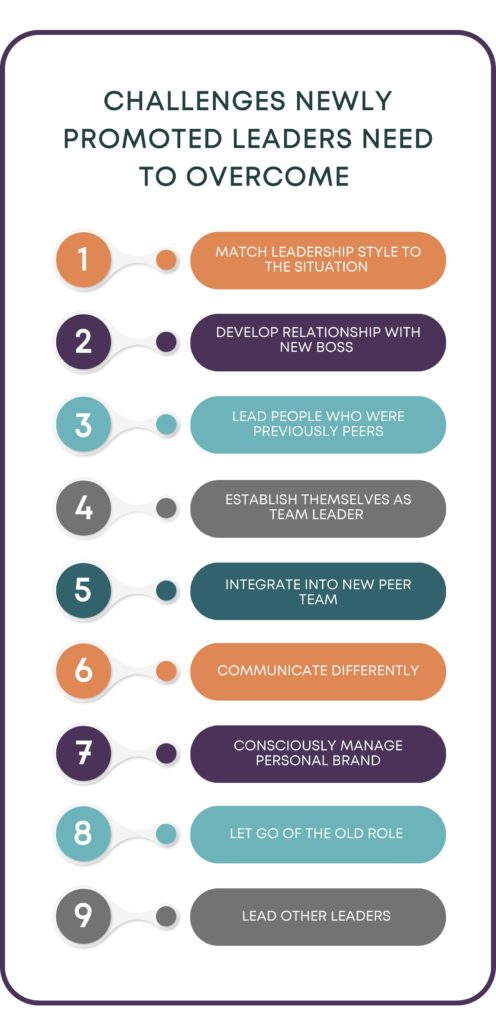
From the start it’s important the new leader actively engages in the peer group discussions, asking clarifying questions and demonstrating a commitment to understanding the new context.
Meeting peers in 1:1’s early on is advisable, so the new leader can understand each peer’s role, perspectives, challenges and what they need from each other to achieve the strategy.
To be seen as a fully committed team member, one that can be challenged and held accountable for results, the new leader must build credibility and influence. To do this effectively they will need to build trust with each member of the team rather than assuming that trust is there. The level and type of trust required on a senior leadership can be quite different to the team they have moved up from.
If the peer team hasn’t had a recent trust-building exercise now is a great time to do it. I have written about to do that here. If it has been done recently then create a team re-cap of it to include the new team member.
6. Communicate differently
As leaders move to senior positions more of the information received is filtered and downward communication can’t be done solely through 1:1’s and team meetings. They will need to establish more channels of communication such as town halls, forums, blogs posts, ideas and feedback channels. Assigning a communications specialist to help the new leader set this up from the start will free up an administrative burden that is often overlooked.
7. Consciously manage personal brand.
Seniority draws scrutiny. How the new leader reacts under pressure, what they stand for, their social media profile, whom they are seen to be friends with at work, and how they present themselves are all under an increased magnifying glass at senior levels. Having a clear picture of how they want their brand to be perceived, and getting feedback on it, is important to get right from day 1 as first impressions are difficult to change.
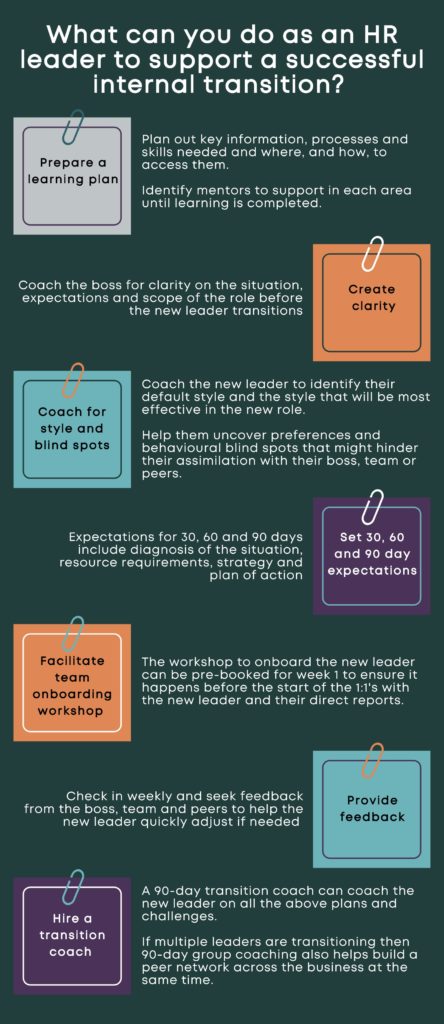
8. Let go of the old job
In either an intentional, or unintentional, way newly promoted leaders may cling on to parts of their old role unless a clear break is made. It’s a good idea for a leader to take time off between roles, to make a symbolic stop point. A robust handover and communication process will of course help with this.
9. Lead other leaders
The new leader will most likely be leading other leaders so will need to be comfortable with coaching leaders on how to lead effectively, as well as how to approach goal setting, accountability and performance management as a leader of leaders. With increased seniority the type of work that gets delegated changes, from a project to a program to a whole business function. The level of oversight, accountability and reporting changes in lockstep. Leaders may need coaching on some of these elements depending on their level of previous experience.
Internal promotions at the senior leadership level are far more common than external*. However, we don’t always set up internally promoted leaders for an easy and efficient transition. The impact of a poorly transitioned leader goes further than the stress put on the leader themselves, it impacts their team, their new peers and their boss, as well as all the other senior stakeholders that typically interact with such a position.
To find out more about how to structure and run a 90-day program for successful leadership transitions book a discovery call with Sarah Robertson Consulting.
*approximately 80% of all CEO places at S&P 500 companies are filled by internal candidates
